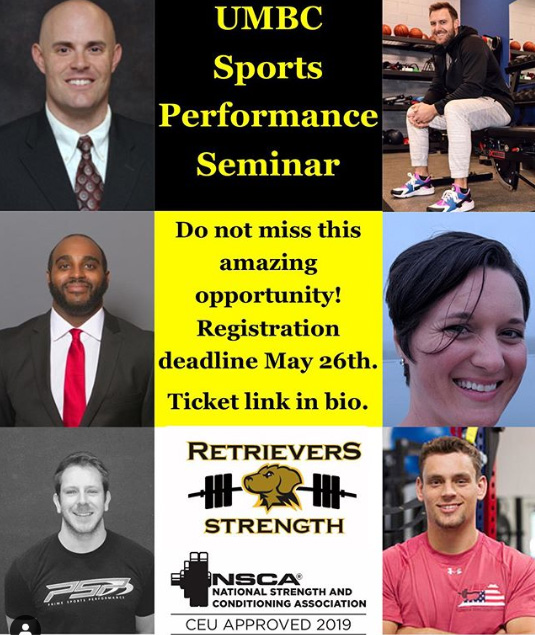
Most “fitness” seminars and continuing ed events are thinly veiled revenue streams junk.
But the one day “Sports Performance Seminars” that colligate strength coaches put on are almost universally always good.
WHY?
Because the speakers at these events actually DO what they’re talking about.
Unlike “fitness” events, the strength coaches product is PERFORMANCE.
Not a certification or gadget.
Strength coaches, sports scientists and physical therapists are on the floor or in the clinic or in the lab, with athletes under the bar or on the table, 9-12 hours a day most days of the week.
You’re learning from people who have REAL WORLD experience.
Its one thing to learn biomechanics, monitoring or programming then sit behind a keyboard telling the rest of the internet about how this guys squat depth sucked, and they should be doing exercise X, Y, Z.
It’s a totally different thing to teach 30 college kids how to squat when:
- You’ve got 2 hours 2x’s a week….make that 40 minutes.
- They CAN NOT GET HURT
- Or feel tired
- Or stiff, sore..
- But they better perform on the field….
- They’re all built differently too
- Have differing strengths and weaknesses
- Differing perceptions of the exercise
- Different “Buy In” to the training process
- Differing life (sport, school, family) stresses.
Strength Coaches are also really good to learn from because they tend to do this most dangerous of things.
Actually Fu#King Train Themselves
I can’t tell you how many times I’ve heard a “fitness, this or that” expert who writes plenty of articles and makes lots of Instagram posts enroll now, only 3 spots left who has never actually trained for anything themselves, let alone another person.
So, in a world of fitness bullshitters, strength coaches tend to be the real deal.
When my buddy and UMBC Director of Strength and Conditioning Brian Amenta shot me an email for the event his staff was putting on, I was in.
UMBC Sports Performance Seminar
First things first,
The cost $55 was an incredible value.
They had coffee and lunch provided. <—-and it was real lunch, not some sad sack ham sammich.
Plus speakers were top notch.
Developing Rotational Power- Kinetic Sequencing and Segmental Deceleration- Andrew Sacks
This presentation was all about how to maximize the rotation and timing of the body segments to maximize force production in rotational sports.
Which is ALL sports.
Key Points:
- Movement sequencing plays a role in power development.
- Timing of movements can be optimized to create higher rotational forces.
- Each Piece of the chain must decelerate in order to effectively transfer energy to the next segment.
- Rotational patterns are largely the SAME regardless of the sport movement.
- Rotational power is created in a proximal to distal movement sequence.
- Pelvis—> Torso–>Shoulder—-> Arm—> Wrist—> Hand
- Each segment should reach peak velocity BEFORE transferring energy to the next segment.
Athlete Monitoring and the Decision Making Process- Cat Wade
Relevant monitoring of your athletes can allow you to make better choices in their training load.
Hopefully, managing the allostatic load on the athlete daily can lead to an INJURY FREE athlete who is chronically adapting to an increasing load, further increasing their injury resilience.
Key Points:
- Risk of injury increases when athletes are unprepared for the load that is being applied.
- ACWR: Acute (3-7 days) to Chronic (21-28 days) workload ratio, aim for a sweet spot of .8-1.3.
- Markers of fatigue:
- Explosive Power: decrease in greater than 10%
- RPE: increase in 2pts or more
- Resting Heart Rate: increase of 5 bpm or more.
- HRV change of 5pts or more (increase or decrease)
- Markers of improvement:
- Heart Rate: Decrease of more than 5beats at a given power output.
- Explosive Power: Increase of greater than 5-10%
- Resting Heart Rate: Weekly average of 3-5bpm decrease
I don’t want to sell this presentation short.
There were LOTS of key points, this was a FABULOUS presentation.
The biggest takeaway from it is I need to go read up/ more on Tim Gabbetts Acute to Chronic workload papers.
It looks like ACWR has been accepted and is being applied as the standard in the field now where just 2 years ago at the last NSCA Coaches Conference I attended it was brought up very briefly in a single session, I’m behind the curve on this.
The Relentless Pursuit: Sports Performance for Basketball- Glenn Cain
Keep things simple and adapt what you do to the language and world of your athletes and sport coaches and you’ve at least got a chance that they’ll respect your opinion and implement your recommendations as a strength coach.
Key Points:
- Revenue sport, small roster, big school = You’re not getting most athletes for all 4 years. Deal with it.
- It doesn’t really matter what the strength coach thinks is valuable, it matters what the SPORT COACH thinks is valuable.
Fluid Periodization: Training the Modern Day Athlete a Systems Based Approach- Matt Nein
It’s good to have a plan, but that plan is going to change and most of the factors that caused it to change is outside the strength coaches control.
Even still, you need to find a way yo keep your athletes prepared to play.
Key Points:
- As a coach ask yourself:
- Do all athletes adapt at the same rate?
- Do I have control over non-athletically related activities?
- What do I have control over?
- How can I better optimize training?
- Programming must be fluid, adjusted to the athletes daily readiness, but also programmed to allow for supercompensation long term.
Basically, this slide, in action (YES, athlete monitoring, programming etc, is complicated):
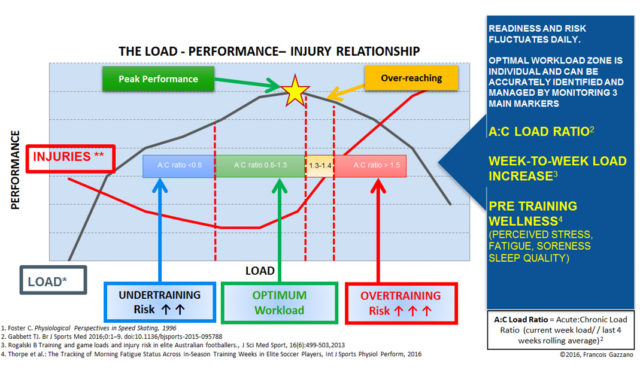
Managing the Injured Athlete- Teddy Willsey
aka Strength Coach Therapy on the IG
The jist of the whole presentation was if you have an injury…
Train What You CAN Train..
Not training is a poor recovery strategy for BOTH the injured tissues and the U-Injured Tissues.
Key Points:
- Injured Athletes Don’t Need Rest!
- Rest does NOT load the non affected tissues. This can lead to them being undertrained and expose those tissues to injury.
- Rest does NOT improve the loading capacity of the injured tissues.
- Total rest results in an athlete who is MORE EXPOSED to injury when they return to play.
- This creates the Injury- Reinjury cycle.
- Benefits of Rehab and Training
- Preservation of physical qualities
- Decreased Pain
- Psychological impact
- Stay on track/ focused/ involved
- Not all Exposed Athletes Get Injured
- Luck, anthropometrics, tissue capacity all play a role.
Injury Prevention:
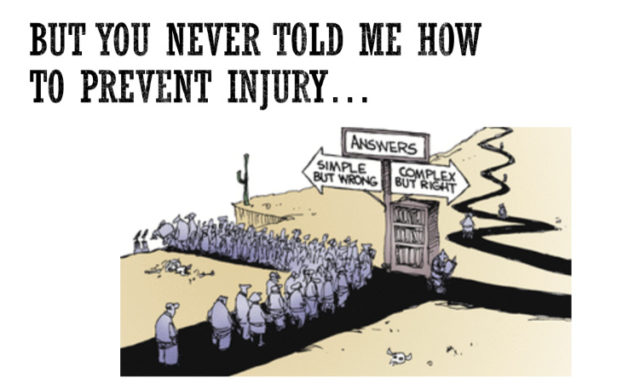
There is a LOT that goes into it.
To say injury prevention is multifactorial is an understatement.
This is why when you THINK doing thing X, Y, Z, is what caused your injury you’re probably wrong. It was just the thing that “broke the camels back” and/ or it’s what you believe caused the injury.
The simplistic, “I did this, and now my _______ hurts” is usually not accurate.
What’s really happening is you’re injury is a matter of the total load exceeding the tissue capacity.
How you get there is irrelevant.
YOU DO NOT WANT TO LOSE TISSUE CAPACITY.
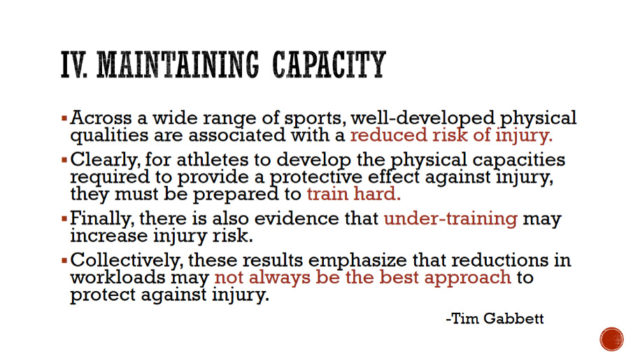 Even when injured.
Even when injured.
Do what you can, whatever that is….
I kinda remember someone once said,
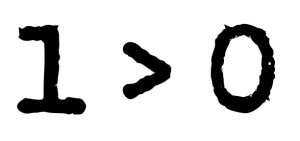 According to Head Strength Coach Brian Amenta most of the credit for the event should go to Assistant coach Neil Wittmer.
According to Head Strength Coach Brian Amenta most of the credit for the event should go to Assistant coach Neil Wittmer.
So, shout out to Neil, job well done.
You put together a really good event and I’m looking forward to next year.


